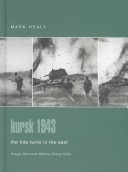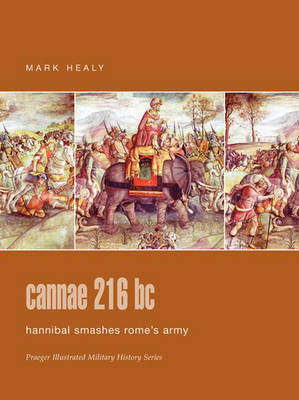Osprey Military Campaign S.
2 primary works
Book 16
In the summer of 1943 the German army stood poised for a major offensive. The attack was aimed at the Kursk salient, which the Germans intended to isolate, trapping large numbers of Russian troops and paving the way for the decisive campaign to knock the Soviet Union out of the war. Warned of the imminent attack by good intelligence, the Russians had turned the salient into a mass of strong defensive positions. In the decisive clash that followed, the Soviets bled German forces white. The counter-offensive which followed began an advance that would end in the ruins of Berlin.
In the summer of 1943 the German army stood poised for a major offensive. The attack was aimed at the Kursk salient, which the Germans intended to isolate, trapping large numbers of Russian troops and paving the way for the decisive campaign to knock the Soviet Union out of the war. Warned of the imminent attack by good intelligence, the Russians had turned the salient into a mass of strong defensive positions. In the decisive clash that followed, the Soviets bled German forces white. The counter-offensive that followed began an advance that would end in the ruins of Berlin.
After the successful battles around Kharkov in early 1943, the German army stood poised for a major offensive in the summer of 1943. This attack was aimed at the Kursk salient, a large bulge in the front that the Germans intended to pinch off, thus trapping large numbers of Russian troops and breaking the front open for the decisive campaign to knock the Soviet Union out of the war. Soviet intelligence was well aware of German intentions however, and the Red Army had turned the salient into a mass of defensive positions. In the decisive clash of steel that followed, the Soviets bled Germany's vital Panzer forces white and finally took the initiative. The counter-offensive that followed began an advance that would finally end in the ruins of Berlin. This then, was the deciding confrontation of World War II. Mark Healy details the individual actions that took place and explains why Stalin and Zhukov were prepared to lose 50% of the Soviet tank force in this encounter. He also examines the reasons for the German defeat in spite of the fact that they had a technological edge over their opponents for the first time since the beginning of Operation Barbarossa. Furthermore, not only are the armored forces of each side investigated, but air power and the role that this played in the battle is also looked at in this wonderfully detailed title.
Book 36
Cannae is rightly regarded as one of the greatest battles of military history. Hannibal's stratagem has become a model of the perfectly fought battle and is studied in detail at military academies around the world. At Cannae the Romans confronted Hannibal with an army of 80,000 infantry and 6,000 cavalry. Hannibal faced them with 40,000 foot and 10,000 horse. The engagement that followed was a masterpiece of battlefield control. By the end of the conflict the Romans had lost 47,500 infantry and 2,700 cavalry killed and a further 19,300 captured. Campaign 36 and Men-at-Arms 121 are also available in a single volume special edition as 'Hannibal's War with Rome'.
The battle of Cannae is rightly regarded as one of the greatest battles of military history. Apart from it being the greatest defeat ever suffered by Roman arms, Hannibal's stratagem has become a model of the perfectly fought battle and is studied in detail at military academies around the world. Following his invasion of Italy during the Second Punic War Hannibal inflicted two bloody defeats on Rome at the River Trebbia and at the battle of Lake Trasimene, in the case of the latter destroying the consular army of Caius Flaminius. After this disaster the Romans determined to ensure both Consuls were present at any future battle. At Cannae the Romans confronted Hannibal with an army of 80,000 infantry and 6,000 cavalry under both consuls who because of a quirk of Roman politics commanded on alternate days. Hannibal faced them with 40,000 foot and 10,000 horse-drawn up on a clear plain where there could be no threat of hidden troops (such as at Trasimene) effectively using his whole army as bait. The battle which followed is a masterpiece of battlefield control. Hannibal allowed his centre to give ground, drawing in the more numerous Roman infantry while his cavalry drove off that of the enemy. Having defeated their counterparts the Carthaginian cavalry returned and charged into the rear of the struggling Roman Legions. By the end of the battle the Romans lost 47,500 infantry and 2,700 cavalry killed and a further 19,300 captured. Mark Healy recounts this battle in detail as well as explaining Hannibal's campaign before it, with particular attention to his invasion of Italy.

